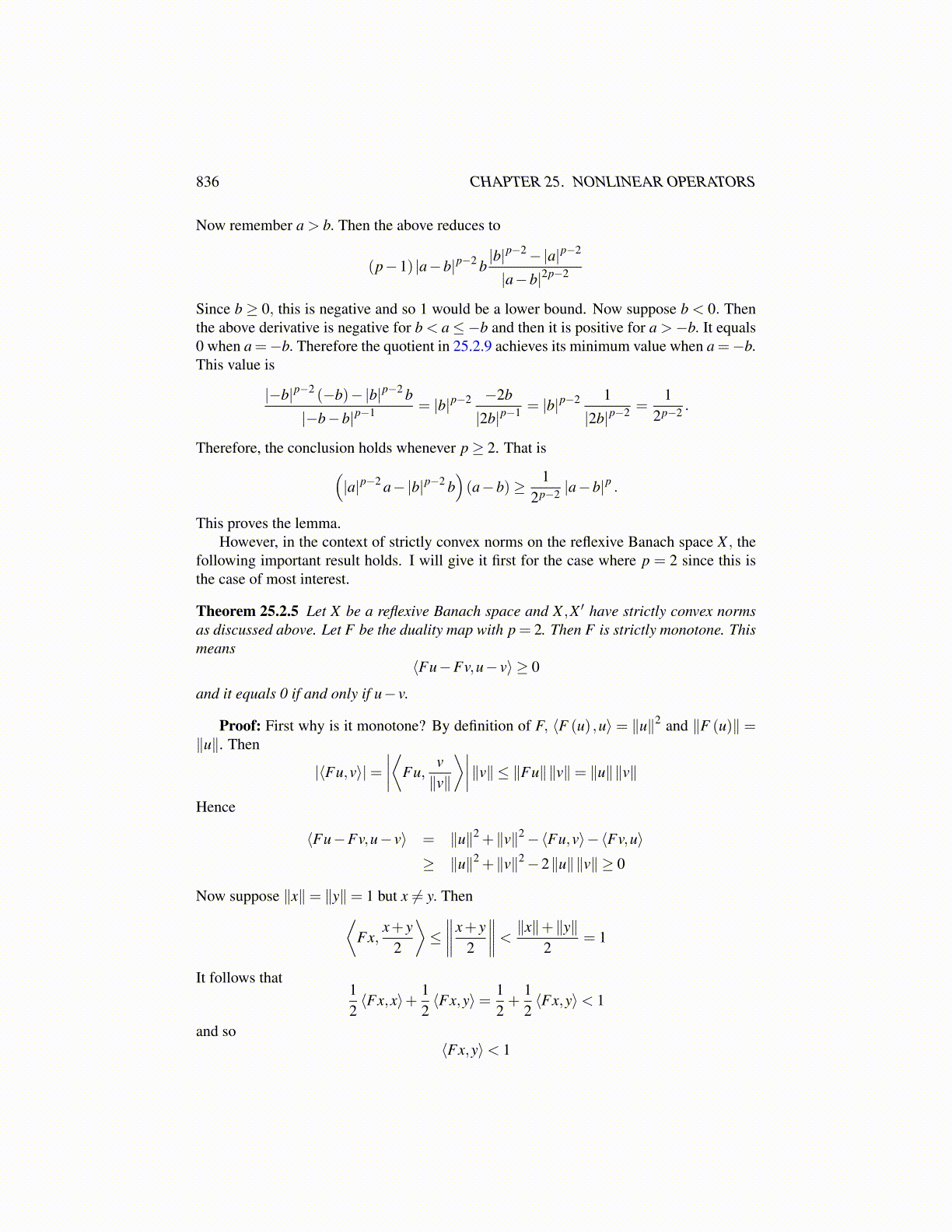
836 CHAPTER 25. NONLINEAR OPERATORS
Now remember a > b. Then the above reduces to
(p−1) |a−b|p−2 b|b|p−2−|a|p−2
|a−b|2p−2
Since b ≥ 0, this is negative and so 1 would be a lower bound. Now suppose b < 0. Thenthe above derivative is negative for b < a≤−b and then it is positive for a >−b. It equals0 when a =−b. Therefore the quotient in 25.2.9 achieves its minimum value when a =−b.This value is
|−b|p−2 (−b)−|b|p−2 b
|−b−b|p−1 = |b|p−2 −2b
|2b|p−1 = |b|p−2 1
|2b|p−2 =1
2p−2 .
Therefore, the conclusion holds whenever p≥ 2. That is(|a|p−2 a−|b|p−2 b
)(a−b)≥ 1
2p−2 |a−b|p .
This proves the lemma.However, in the context of strictly convex norms on the reflexive Banach space X , the
following important result holds. I will give it first for the case where p = 2 since this isthe case of most interest.
Theorem 25.2.5 Let X be a reflexive Banach space and X ,X ′ have strictly convex normsas discussed above. Let F be the duality map with p = 2. Then F is strictly monotone. Thismeans
⟨Fu−Fv,u− v⟩ ≥ 0
and it equals 0 if and only if u− v.
Proof: First why is it monotone? By definition of F, ⟨F (u) ,u⟩ = ∥u∥2 and ∥F (u)∥ =∥u∥. Then
|⟨Fu,v⟩|=∣∣∣∣⟨Fu,
v∥v∥
⟩∣∣∣∣∥v∥ ≤ ∥Fu∥∥v∥= ∥u∥∥v∥
Hence
⟨Fu−Fv,u− v⟩ = ∥u∥2 +∥v∥2−⟨Fu,v⟩−⟨Fv,u⟩≥ ∥u∥2 +∥v∥2−2∥u∥∥v∥ ≥ 0
Now suppose ∥x∥= ∥y∥= 1 but x ̸= y. Then⟨Fx,
x+ y2
⟩≤∥∥∥∥x+ y
2
∥∥∥∥< ∥x∥+∥y∥2= 1
It follows that12⟨Fx,x⟩+ 1
2⟨Fx,y⟩= 1
2+
12⟨Fx,y⟩< 1
and so⟨Fx,y⟩< 1